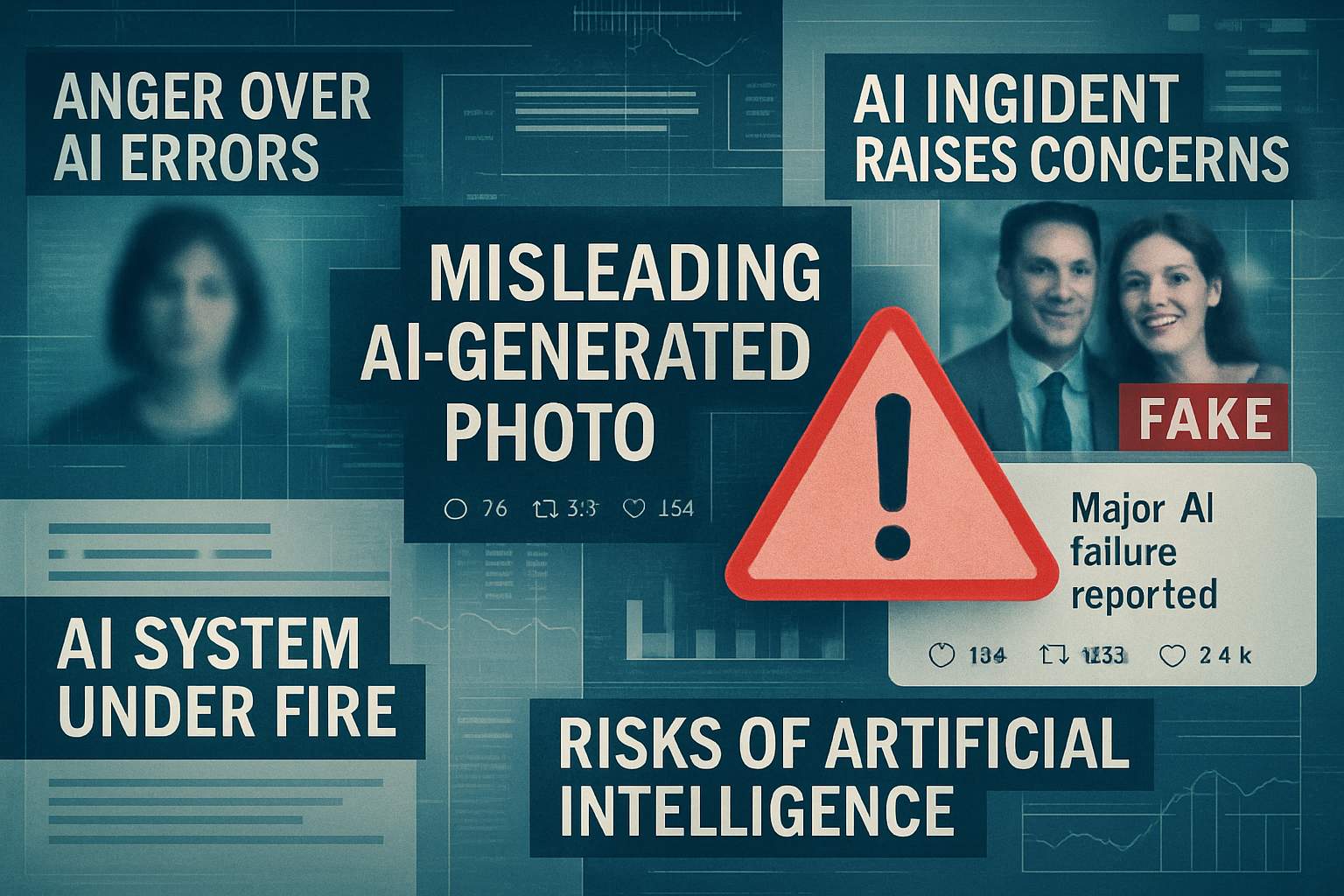
AI CERTS
2 hours ago
AI harms see 56.4% YoY increase, raising urgent oversight

This article dissects the numbers, profiles emerging risk patterns, and offers actionable guidance for technical executives.
Furthermore, we spotlight certification pathways that boost organisational readiness.
AI Incident Surge Explained
Stanford analysts attribute the surge to two converging forces.
Firstly, model deployment soared as 78% of surveyed firms embedded AI into workflows.
Secondly, reporting pipelines matured, enabling faster submission of incidents to the AI Incident Database.
Meanwhile, private AI investment hit $109.1 billion, intensifying competitive timelines.
Moreover, cheaper inference costs—down 280× in two years—lowered barriers for risky prototypes.
Consequently, real-world failures multiplied, feeding the 56.4% YoY increase headline.
Nevertheless, researchers caution that counts still underestimate hidden operational errors.
In contrast, visible deepfake incidents skew public perception toward sensational harms.
These drivers explain the headline surge.
However, deeper factors appear in the next section.
Drivers Behind Rising Numbers
Adoption intensity represents the most obvious driver.
However, governance lag also plays a decisive role.
Organisations often release models without mandatory red-team exercises.
Consequently, failure modes emerge after public launch, increasing dependency on external harm tracking expansion initiatives.
Private capital flows, estimated at $33.9 billion for generative AI, encouraged rapid scaling without commensurate safeguards.
Meanwhile, media coverage incentivises whistle-blowers to share evidence of deepfake incidents and other abuses.
Academics add taxonomy rigor through MIT’s AI Incident Tracker, which now classifies over 1,200 events.
Therefore, improved tagging raises visibility and amplifies the 56.4% YoY increase within policy circles.
Drivers combine technical, organisational, and social elements.
Next, we examine concrete 2024 failures.
Notable 2024 Incident Types
Reported failures span privacy, safety, and legal domains.
Additionally, AIID highlights four headline categories.
- Deepfake incidents spread non-consensual images and election misinformation.
- Retail surveillance misidentification triggered wrongful detentions and damaged reputations.
- Hallucinated legal citations produced flawed court briefs and disciplinary actions.
- Chatbot safety concerns peaked with the Character.AI teen suicide case in late 2024.
Incident diversity complicates mitigation because each domain demands context-specific controls and redress paths.
These snapshots reveal tangible harms across sectors.
However, dataset strengths and weaknesses deserve equal attention.
Database Strengths And Limits
AIID’s open model ensures public accountability.
Weekly snapshots enable replication and foster international harm tracking expansion by policymakers.
Nevertheless, dependence on media coverage introduces sampling bias.
Quiet supply-chain failures rarely reach press, so they escape counts despite the 56.4% YoY increase headline.
Richards et al. stress that incident narratives often lack verified root causes and accountability chains.
In contrast, the MIT tracker adds severity scoring, yet underlying evidence still depends on AIID submissions.
OECD experts advocate mandatory near-miss reporting to reveal hidden risk patterns.
Strengths offer transparency, while limits temper conclusions.
Subsequently, policy harmonisation efforts try to resolve definitional gaps.
Policy And Standardization Efforts
OECD’s AI Incidents Monitor proposes a common hazard versus incident taxonomy.
Moreover, regulators hope harmonised labels will simplify cross-border analysis of the 56.4% YoY increase trend.
Stanford and MIT teams contribute data schemas which could integrate directly with future harm tracking expansion portals.
Meanwhile, the European AI Act mandates public disclosure for severe deepfake incidents within consumer applications.
Consequently, civil society groups expect faster alerts about chatbot safety concerns and similar emergent risks.
National regulators pilot dashboards that assimilate AIID feeds into real-time heat maps for lawmakers.
Policy directions now align toward transparency and interoperability.
Next, executives need actionable practices that anticipate stricter reporting duties.
Risk Mitigation Best Practices
Organisations can adopt three immediate safeguards.
Firstly, integrate incident-response playbooks that mirror cybersecurity drills.
Secondly, deploy red-team audits targeting deepfake incidents and chatbot safety concerns before launch.
Thirdly, assign a responsible executive for ongoing harm tracking expansion, ensuring lessons feed product roadmaps.
Additionally, staff can strengthen competencies through the AI Ethics Strategist™ certification.
Such training prepares teams for the relentless 56.4% YoY increase in reported failures.
Continuous monitoring frameworks must then flag anomalies, escalate them, and trigger transparent post-mortems.
These practices harden organisational reflexes against surprise harms.
However, leaders must maintain forward-looking vigilance, as the next section explains.
Looking Ahead To 2025
Sean McGregor predicts incidents may double again, echoing Moore’s law dynamics.
Therefore, another 56.4% YoY increase is not the ceiling but a baseline for planning.
Firms should model escalating exposures, including a possible repeat of the Character.AI teen suicide case under different brands.
Moreover, generative agents will likely intensify chatbot safety concerns as conversational intimacy deepens.
Insurance carriers already adjust premiums based on public AI incident totals.
Anticipating these trajectories requires continuous data sharing and cross-sector coordination.
Consequently, closing knowledge gaps remains essential beyond headline statistics.
Conclusion And Next Steps
2024 confirmed that AI risk growth outpaces governance fixes.
The AI Incident Database captured a 56.4% YoY increase, sounding a wake-up call for leaders.
Repeated headlines, including the Character.AI teen suicide case, illustrate human costs behind statistics.
Consequently, teams must treat another 56.4% YoY increase as a likely scenario, not a remote possibility.
Furthermore, frontline designers must recall the Character.AI teen suicide case whenever chatbot features target minors.
Finally, bolstering ethics skillsets through certifications ensures readiness for another inevitable 56.4% YoY increase.
Visit the certification portal today and future-proof your AI strategy.



